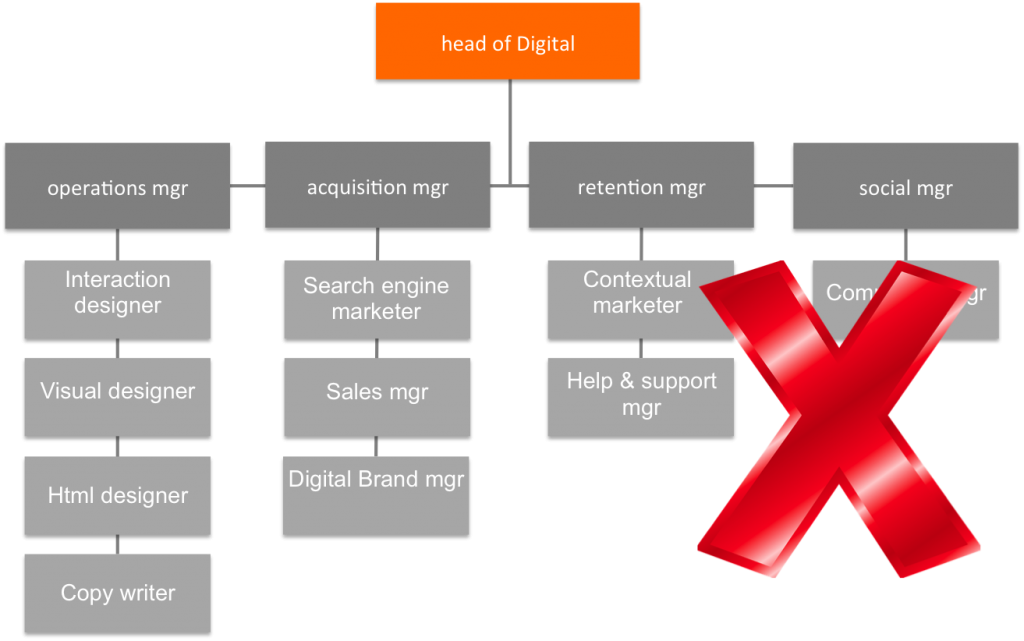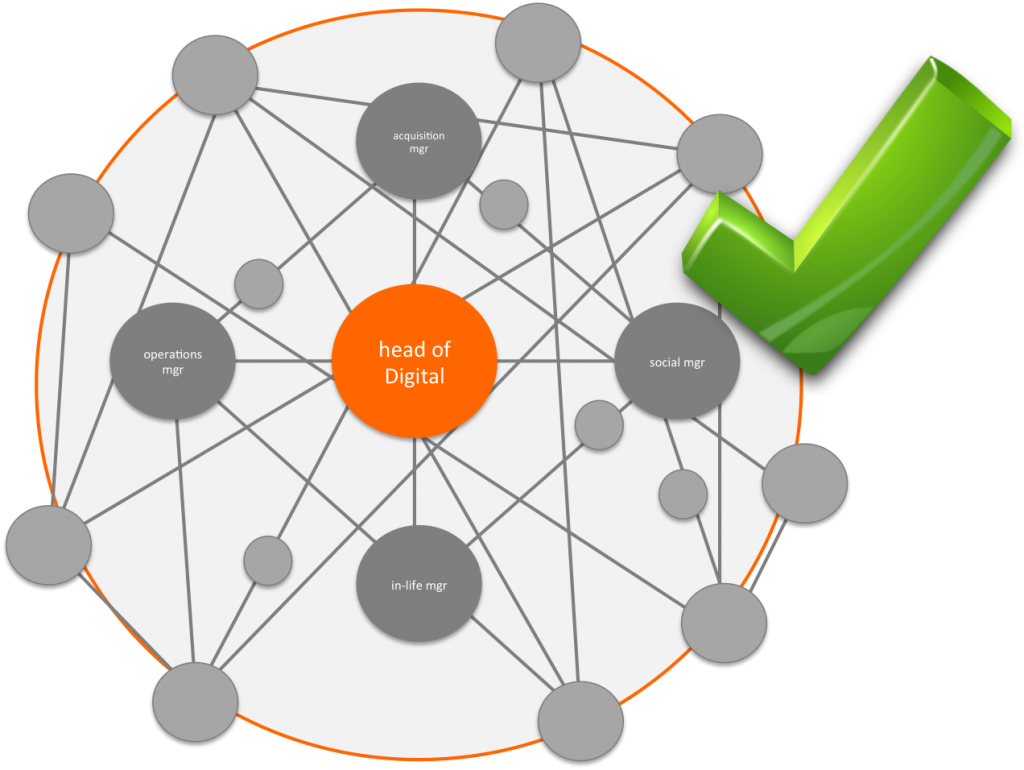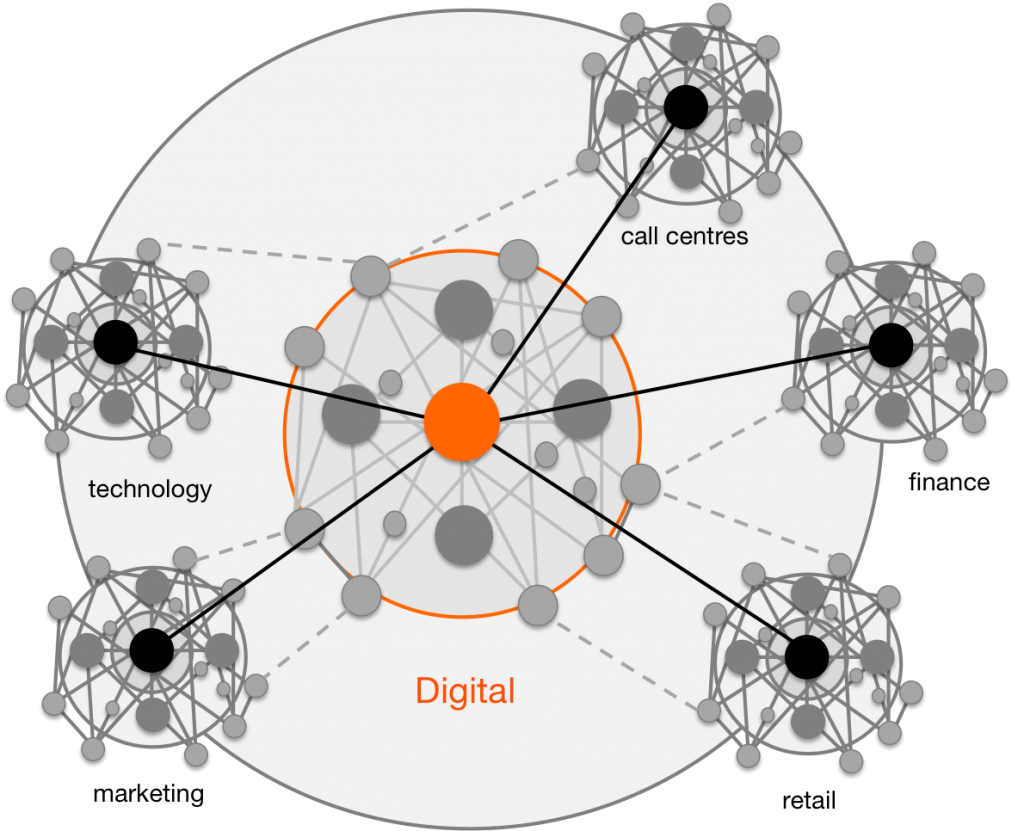Team diversity
Many organisations organically evolve toward a more or less homogeneous group of people. This is most often driven by familiarity and consensus among its ‘members’. Different viewpoints or opinions cause a certain friction that is not always managed appropriately. As a result there is a selection process that favours unchallenged consensus or even group-think.
Recruitment and team composition is a balancing act. Finding that level of diversity that allows for both efficient teamwork and outside-of-the-box-thinking that encourages novel ways to solve entrepreneurial challenges like the introduction of new products or targeting new segments of users.
A common root cause of overly homogeneous teams is our bias toward common experience. Most job descriptions used in recruitment focus on what candidates have done, rather than who they are. This experience is in turn screened and evaluated by people with similar experience (conducting job interviews), which leads to unity and replication.
Replicating ‘proven’ solutions where many digital product teams require continuous adaptation to ever changing circumstances. Although experience is still an important ingredient, it needs to put to work in combination with multidisciplinary, and diverse personality traits in order to keep a fresh view on product development.
coming soon:
- performance management (attendance vs output vs giving meaning)
- KPIs & targets (help and ask-for-help > qualitative vs quantitative)
Transforming the-way-of-work
Digital transformation requires the courage the change both the mindset and the way-of-work. Traditional ‘linear’ thinking has worked well in terms of efficiency, but are most successfully applied when the outcome is certain. In today’s digital landscape, however, the demand is often counter-intuitive (even to the most equipped designers) and might change frequently as users discover what digital can do for them in.
A steep learning curve is key:
- customer centric
Involving real users into the design process. Applying both quantitative and qualitative methodologies to understand the customer demand. - short cyclical
In design; from ideation to a working prototype in days
In development; from a user-tested prototype to a true customer facing product in a couple of weeks
In short: try, learn and pivot on those things that work!
This might sound more straightforward than it is in practice. There are many obstacles in our traditional way-of-work that might not be compatible with this approach. For example; designing for uncertainty makes it difficult to ringfence a budget. Designing-for-uncertainty is difficult to fund with a business case that asks for a specific forecast based on a fixed time window. This is simply how are traditional modus operandi is: ROI, NPV and IRR
Design Thinking, followed by agile development need to some extend a leap of faith. Namely in the first phases in which the product is not yet mature enough to face a (paying) customer, but the learning curve is steep. This is where the Minimum Viable Product (MVP) is crucial. In order to face a true business environment soon the product team needs to limit their scope.
A new type of organisational setup
In order to digitalise and organisation it needs to permeate the ‘digital mindset’ throughout the company. This is mostly a bottom-up transformation. Every department needs to revision their strategy to connect to their digital products & services (both internal and external when customer facing). Those companies with a digital division can, however, lead this process by experimenting and evangelising best-practice. New ways of collaboration, communication and defining performance are key.
Most organisations still map their workforce on a traditional org chart with strict hierarchies and reporting lines. Both responsibility and accountability follow these ridged paths and inevitable create silos which constrain communication and collaboration. To make digital ‘work’ all of the silos need to open up and align to meet the transformation.
A traditional org chart:
- hierarchical
- siloed
- controlled
- delegated accountability
- reactive responsibility

Today’s requirement for engaged and productive teams is much more like a spiderweb. The connections between individuals are not linear or directional, but rather dynamic and cross-functional. It allows for a stronger fabric, but requires to let go of traditional management styles that are based on hierarchy and ‘rank’.
- encouraged initiative
- strong fabric
- facilitated rather than controlled
- pro-active responsibility

Operating in a matrix organisation in which the process is organic rather than top-down.
